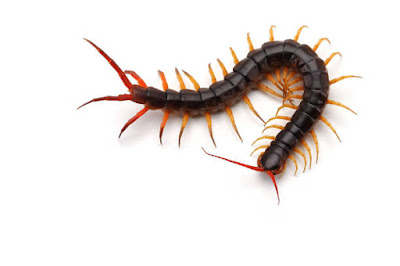The centipede is an arthropod so it is an animal. The centipede scientific name is Chilopoda. The centipede higher classification is Myriapoda. The Amazonian giant centipede is the largest species of central and South America. It is 30 cm long. The centipede is traveled 1.3 feet per second. The centipede is living in a desert habitat, tropic, and seashore. The centipede has segment per one pair of legs. The adult centipede has 15 – 177 pairs of legs. The Lithobiomorpha and Scutigeromorpha orders have 15 pairs of legs. The centipede can inflict painful bites. The lizards, frogs, birds, mice, and bats are eat-in centipede. The centipede is given 10 – 50 eggs. The centipedes are eat-in insects, mollusks, annelids, small arthropods, and other small invertebrates. The centipedes are multiple legs and a long cylinder body so it is an arthropod, not an insect. The Europe and North America house centipede are 25 mm long. The centipede is brown and reddish-orange. The centipede is 4 – 152 mm in size. The centipede has one pair of antennae.
Class - Chilopoda
Phylum - Arthropoda
Subphylum - Myriapoda
Type of centipede:-
1. Feathertail centipede
2. Blue leg centipede
3. Stone centipede
4. Earth centipede
5. Galapagos centipede
6. Giant centipede
7. House centipede
8. Peruvian giant yellow leg centipede
9. Giant red-headed centipede
10. Redheaded centipede
11. Giant Sonoran centipede
12. Vietnamese centipede



























Please don't enter any spam link in the comment box.